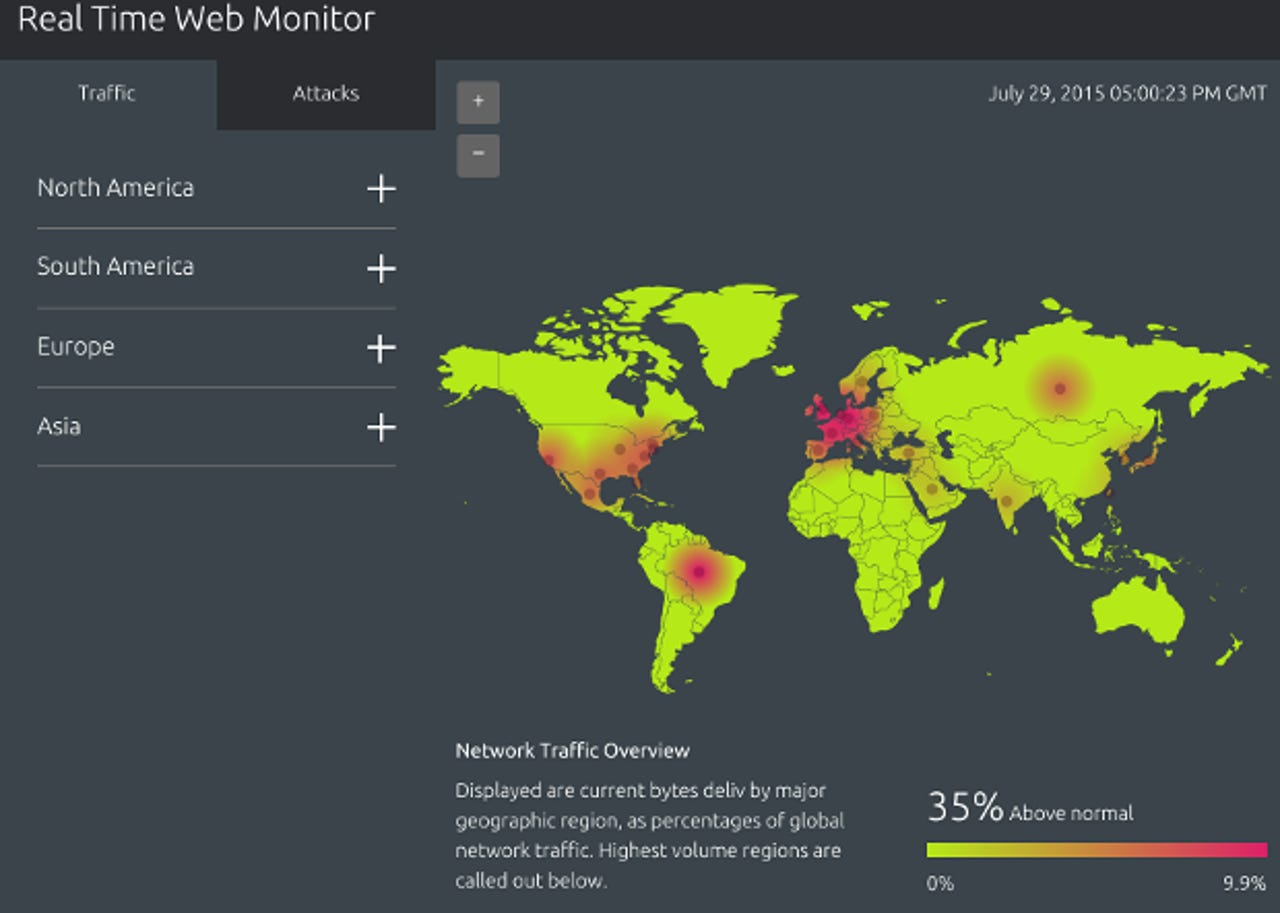Windows 10 downloads bend, but don't break, the Internet

Today, July 29, is the day for eager Windows fans. Windows 10 is now available not just for Windows Insider, but for anyone who wants to download it. That's all well and good, but can the Internet handle millions of simultaneous 3.5GB downloads? So far, even as Akamai reports that Internet traffic is 35 percent higher than normal, the answer is yes.

That's not happening with Windows 10. I sought in vain on Reddit, Twitter, and other social networks for anyone having real trouble downloading Microsoft's latest operating system. I couldn't find a soul facing a major Internet traffic jam. Of course, if you have, say, a 4MBps DSL connection, it's still going to take you just under two hours to download it.
Some people feared that Windows 10 download traffic could break the Internet with traffic peaks of up to 40 Terabits per second (TBps). That doesn't seem to be happening.
While Microsoft declined to say exactly how they're handling the demand, we do know some things about how Microsoft is delivering Windows 10's bits to your computer.
More Windows 10
Terry Myerson, Microsoft's Executive Vice President of the Windows and Devices Group, gave us a big hint in early July. Myerson blogged, "Starting on July 29, we will start rolling out Windows 10 to our Windows Insiders. From there, we will start notifying reserved systems in waves, slowly scaling up after July 29th."
The key word is "waves." Microsoft is not simply letting users click and download. Instead, you need to reserve a copy. You may have already done that if you had an eligible Windows 7 or 8.x system. To get in the queue, you had to click on the "Get Windows 10" icon and then press "Reserve your free upgrade now" button. Clicking that button configures your PC to download and install the upgrade bits and adds the current device to the Windows 10 waiting list.
Then, Microsoft, not you, decides when you'll get your update. For example, if you chose to upgrade your desktop a week ago and your laptop an hour ago, your laptop may still get Windows 10 first.
In other words, unlike Apple with iOS 8, Microsoft isn't letting everyone rush to the update gate and clog it up with traffic.
The difference between what Microsoft is doing and the troubles that beset popular streaming video is latency. With the Windows 10 download, even a few seconds delay between bursts of traffic doesn't really matter. With a live-sporting event, that's enough to have people throwing their beer at the screen and screaming.
While Microsoft wouldn't confirm this, Dan Rayburn, executive VP of Streaming Media, said : Microsoft has reserved up to 40Tb/s per second of capacity from all of the third-party CDNs [Content Delivery Networks] combined. Sources at several CDNs stated that Microsoft had made "significant bandwidth investments" for July 29 and the following few days.
Rayburn also predicted that Windows 10 is going to "create some serious havoc with regards to the user experience. Expect to see some download times in the days, not hours." That simply doesn't seem to be happening.
Users aren't reporting any significant downloading delays. Internet traffic monitoring sites, such as the Internet Traffic Report and Keynote's Internet Health Report, aren't showing any problems.
It's a busy day on the Internet. It may even be record-setting when all is said and done, but the Internet's in no danger of breaking.
Related Stories: